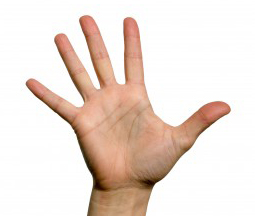5 Ways To Renovate Rather Than Replace Your Trade Show Exhibit
Before you buy a new trade show exhibit, take stock of what you already own and determine if renovation is a better course.
 Rearrange exhibit elements you own to create something new. It is easiest to do this if you own a modular exhibit. But it is possible to switch around parts and pieces of most custom exhibits as well. And don’t forget about unused components that are left over from other old exhibits. Sometimes a combination of parts from two or three booths that have been in storage can be used to create an entirely new booth.
Rearrange exhibit elements you own to create something new. It is easiest to do this if you own a modular exhibit. But it is possible to switch around parts and pieces of most custom exhibits as well. And don’t forget about unused components that are left over from other old exhibits. Sometimes a combination of parts from two or three booths that have been in storage can be used to create an entirely new booth.- Refinish or cover worn booth elements. There are countless exhibit refurbishment options. You can have worn aluminum or metal parts re-anodized or powder coated to make them look brand new or transform them into a new color. Exhibit panels can be re-laminated or re-covered to conceal worn surfaces with other materials. You can even have old display panels covered with magnetic graphics.
- Update hardware and lighting. One of the least expensive ways to update your exhibit is to simply update cabinet hardware and replace outdated light fixtures.
- Update the flooring system. You can purchase a whole new flooring system or remodel your existing flooring to create the impression of newness. A new floor can be anything from new, colorful carpet to adding a raised floor.
- Add a few new elements. The most effective way to refresh an outdated exhibit space is to add a few new components —hanging signs and banner, displays, a conference area, desks, You can even incorporate more elaborate tension-fabric structures to revive your exhibit and give it an up-to-date look.
A few smart, simple changes or additions can quickly and affordably give a tired, outdated exhibit a brand new look.
Trade Show Exhibit Design: It pays to “Think Big”
If you want a Trade Show exhibit that is memorable and persuasively communicates your brand, keep it focused on one overarching idea. Think Big. Create a “Big Idea”.
 When a prospect walks into a Trade Show they are confronted with hundreds – even thousands of different marketing messages. If you are lucky, your company will have 15, maybe even 30-seconds to capture that prospect’s attention.
When a prospect walks into a Trade Show they are confronted with hundreds – even thousands of different marketing messages. If you are lucky, your company will have 15, maybe even 30-seconds to capture that prospect’s attention.
The less you try to say, the more people remember.
One way to break through the competitive clutter is to have a single-minded message – a simple statement that sums up the most important thing you can say about your company that will convince a prospect to consider buying your product – and then to communicate this message with creative that is attention-getting and memorable. This is often referred to as a “Big Idea”.
What if your company doesn’t have a single-minded message?
Sometimes the answer is already part of your company’s marketing program. For most companies, particularly B2B firms, I have found that there is no single-minded message in the advertising and marketing communications. Usually, there is a well thought out graphics standard, a nice logo and tagline, and some positioning and benefits copy on collateral and the company’s website.
If your company doesn’t have a single-minded message, develop it. Look for a key insight about your brand. Start with your customers’ buying behavior to discover one significant reason why customers buy – or why they don’t buy – from your company.
Then answer this “simple” question, “What is the one thing we want to say to our target customer to convince them to buy from us?”
Ask the people who work with you the question. Sometimes the head of Sales and Marketing can answer the question immediately. But if no one can answer the question, answer these three questions:
- Why do you need a big idea?
- What is the problem you are trying to solve?
- Why does the problem exist?
Then sum up the answers into a one sentence response that answers the question, “What is the one thing we want to say to our target customer to convince them to buy from us?”
How can you come up with a “Big Idea”?
Once you have a single-minded message, you can start to work with your creative team to create a “Big Idea” that powerfully communicates the message. A good place to start is to select an exhibit marketing support firm that has the capability of working with you to craft this “Big Idea” and to align every aspect of your trade show effort to support the “Big Idea”.
Communicate this “Big Idea” in every element of your trade show exhibit – from the graphics and exhibit to the people who are staffing your booth to promotional materials – make sure that everything is building an attention-getting, memorable message.
You can incorporate your “Big Idea” into all the elements of your trade show program:
- Exhibit theme
- Live presentations
- Traffic building attractions
- Booth staff
- Pre-show promotion
- Lead response and follow-up
Does your company have a single-minded message? Has your exhibit marketing support firm delivered a big idea for your company?
Avoid Being Part of the “Boring Sea of Tradeshow Sameness”
I attend a lot of trade shows – hardware, books, electronics, men’s wear, food service, medical equipment, etc. – if there is a trade show, odds are I’ve probably been to it.  It’s part of my job. Sometimes it is a delightful part of what I do – but all too often I can walk an entire trade show floor and not see one new, inspiring idea.
It’s part of my job. Sometimes it is a delightful part of what I do – but all too often I can walk an entire trade show floor and not see one new, inspiring idea.
So far this year at the shows I have attended, I have found that most booths are professional looking and nicely designed but I often don’t remember anything the minute I move on to the next aisle. The words that come to mind: boring, formulaic, and devoid of any discernable brand personality.
Everything is perfectly planned, so why aren’t you more successful?
You have a great location for the show – right up front, with lots of traffic. You have a beautifully designed booth that is uncluttered and well-merchandised. You have great people who know that a positive attitude is essential. Yet people just keep passing by, and don’t even slow down.
Ask yourself, why should someone stop at your booth?
Think about what it is like to attend this show or conference. After three hours of seminars and speeches, the conference attendees finally get a break. They enter the exhibit hall and are greeted with hundreds of booths and the din of people chattering, music and sales presentations. They quickly walk down the aisles and select a few booths to visit. What can you do to make your booth one of those stops?
Avoid being part of this “boring sea of sameness”?
Do something different and unexpected. Break out of the “just another trade show exhibit” pack. And do it in a way that sells your product and builds your brand. I know it is much easier said than done, but here are a few breakout ideas:
- Entertainment: If it is appropriate to your overall message and product, hire a professional performer to be part of your booth but give it a twist. One small book publisher was promoting a new series of activity books include a book on juggling. They secured two booths located directly across from each other. Then they hired a two-person comedy juggler team who did a juggling show across the aisle. It was hard for anyone who saw this simple spectacle to pass them by without stopping. More importantly, it was hard to forget that the publisher had a juggling book coming out.
- Create a place to “escape” from the show. Provide a place to really relax that gives you a sales opportunity. Many exhibitors provide comfortable seating or have conference tables with chairs for meeting with prospects or set up beverage bars with stools. This just creates a place to relax and avoid a sales message. Often it creates a place for your staff to sit where no one can see them. The breakout idea is to incorporate the escape into the overall sales message. A travel incentive company who promotes South Pacific Getaways created a tropical beach getaway with a couple real palm trees, some fresh exotic flowers, beach chairs and tropical beverages. They added ambient sound with tropical birds and waves and simple lighting effects. The staff was dressed in tropical business attire and was actively engaged in greeting people and answering questions – they were not relaxing at the beach, they were smiling, attentive and working all the time. It was the most popular place at the entire show. Everyone who entered received a “Tourist Guide and Passport” that provided information about the company’s travel incentives.
- Incorporate an interactive demonstration. Make your booth interactive and experiential by turning the sales process into an active, dynamic experience. It doesn’t need to be a technological wonder and it should always involve 1-to-1 interaction between the sales staff and the prospect. Have something unusual for people to do, touch, smell or even taste. Bring your products to life with interactive demonstrations that focus on the key sales proposition. And if you do incorporate technology, make sure that it is not complete “self-service”. A medical technology company used an Interactive 3D display to allow prospects to explore their product, zoom, see internal mechanics, and even go a simulated “test drive”. The 3D simulation provided the company the opportunity to introduce key prospects to a very costly medical device but required some assistance from the booth staff so that there was a natural opportunity to start a dialog.
- Everybody wins. If you are going to have a prize drawing, come up with something more enticing than a fishbowl for the entries and a random drawing sometime in the future when most of the entrants are already left the show. Attendees remember events, games, and competitions. One clever exhibitor created an “everybody wins” contest with thousands of prizes. Instead of being just another booth with a free logoed giveaway, they enticed people into entering their booth and spinning a gigantic wheel of fortune. Even most of the people who won the smallest prize – a promotional item with the company’s name, website, and phone number – remembered the company because they won their prize.
- Open and inviting. The simplest way to increase the effectiveness of your trade show marketing is to open up your booth. Get rid of the table across the front and get rid of any barriers. Eliminate all the clutter. Design your trade show exhibit for graphic impact with large, attractive images and clean, simple and bold elements that will draw one’s attention. Add dramatic lighting and motion that welcomes people into your booth.
Have you seen any unique and enticing booth ideas that created buzz on the exhibition floor and attracted visitors?
Trade Show Exhibit Design: The Creative Brief
When you need to have a new trade show exhibit created, plan to discuss your schedule, budget, exhibit space, how frequently the booth will be used, and if there are any special requirements for the exhibit. If you want to create a breakthrough exhibit, also take the time to put together your creative requirements.
 Even some of my most organized clients rarely organize and formalize their creative requirements before they start working on a new trade show exhibit. They generally start by providing some basic verbal instructions about the design requirements. Then spend a lot of time gathering information in response to questions from the creative team.
Even some of my most organized clients rarely organize and formalize their creative requirements before they start working on a new trade show exhibit. They generally start by providing some basic verbal instructions about the design requirements. Then spend a lot of time gathering information in response to questions from the creative team.
Letting your vendor work solely from verbal input is the best way to waste time and money. Sometimes it results in a flashy but generic exhibit, and communications disconnects. On the other hand, if you work with your design firm to create a formal creative brief, you are well on your way to creating an exhibit that fully represents your brand and engages your target customer, and makes you look like a pro.
Look for a partner who will collaborate with you and create a formal brief – a succinct statement of what you are trying to accomplish and communicate with your new trade show exhibit. Once you have a formal brief, it’s easy to run it by key stakeholders and make sure that you are on the right track. It also serves as a guide for the creative team so that they clearly understand their mission.
Most of what you need to provide is probably readily available. A few phone calls or quick visits with co-workers and you will have most of the answers. The format that you use really doesn’t matter. Just gather the answers to the key questions and work with your exhibit marketing company to create a brief.
Here’s a list of preliminary questions that I have found are a useful starting point:
Brand and Company Mission:
What is your brand position?
What is your corporate mission?
These are usually brief formal statements that are prepared by the Marketing Department.
Background:
What do you want to achieve with the exhibit?
How will you measure the success of your trade show effort?
What’s going on in the market? Any opportunities or problems in the market?
Your Target Customer:
Who is your target customer?
What should be avoided in talking to this audience?
What do they believe about your company before we tell them anything?
Is there an important secondary audience?
The Message:
If you could get one sentence through all the clutter, what would that be?
If they asked you to prove it, how would you do that?
Are there any other major points do you want to communicate?
Be critical and honest about the answers to these questions. It is great to focus on your company’s strengths but it is also important to make sure the creative team knows your company’s weaknesses and challenges.
Once you have the answers, work with your exhibit design firm to develop a creative brief that provides a clear statement of expectations and lay out a clear framework for the creative team. I have found that the most effective creative briefs result from a collaboration between the client and their design team.
Do you have a collaborative relationship with your trade show exhibit design firm? Do you think it matters?
Archives
- July 2021
- June 2021
- May 2021
- April 2021
- October 2018
- September 2018
- August 2018
- July 2018
- June 2018
- May 2018
- April 2018
- March 2018
- February 2018
- January 2018
- December 2017
- November 2017
- October 2017
- September 2017
- August 2017
- July 2017
- June 2017
- May 2017
- April 2017
- March 2017
- February 2017
- January 2017
- December 2016
- November 2016
- October 2016
- September 2016
- August 2016
- July 2016
- June 2016
- May 2016
- April 2016
- March 2016
